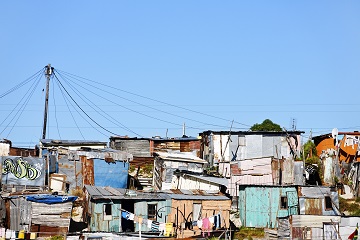Cable theft
 South Africa is experiencing a rapid increase in the criminal act of cable theft. This trend of stealing cables affects every citizen in the country.
South Africa is experiencing a rapid increase in the criminal act of cable theft. This trend of stealing cables affects every citizen in the country.
According to South African Police Services, copper cables are mainly stolen from the mines, Transnet, Telkom, Eskom and municipalities. The South African Chamber of Commerce and Industry estimate that cable theft cost the economy between R5 billion and R7 billion per year.
Why do people steal cables?
Cable theft is thought to be done by people who see this as making quick money. There are also syndicates who operate in conjunction with unscrupulous scrap yard dealers.
The effect of cable theft
Cable theft has a big impact on crucial services like public transport, electricity, telephone and internet. When cables are stolen from the rail system, trains are delayed and cancelled because the infrastructure is badly damaged.
Metrorail
Vandalism costs Metrorail approximately R70 million per year. Delayed and cancelled trains lead to lower productivity and job losses. To combat this, Metrorail has:
• started offering money for information about cable theft and other vandalism
• fitted 16 stations with CCTV cameras
• constructed a wall between Nyanga and Bonteheuwel station to combat criminal behaviour
• tightened security and added visible policing
The City of Cape Town, the Passenger Rail Agency of South Africa (PRASA), and the Western Cape Government formed a dedicated enforcement unit to focus on the safety and security of Metrorail commuters and infrastructure. The Rail Enforcement Unit consists of 100 officers and were deployed on 28 October 2018.
Eskom

The stealing of copper cables, overhead lines, transformers and conductors cost Eskom approximately R2 billion per year. Illegal electricity connections and cable theft lead to power outages which lead to an increase in crime when properties are vulnerable. The illegal connections of electricity can lead to household fires and accidental death by electrocution.
To safeguard against cable theft, Eskom has:
- Replaced copper conductors with aluminium.
- Placed unique markers on all steel pylons that identifies it as belonging to Eskom.
- Replaced bolts on pylons with anti-theft bolts.
- Installed alarms on overhead lines.
It’s very dangerous and life-threatening to steal electrically charged cables.
The law and cable theft
The Criminal Matters Amendment Act, regulates bail and impose minimum offences for essential infrastructure-related offences. This Act came into effect in 2018 and the following are the recommended sentencing for cable theft:
- the minimum sentence for first-time offenders is 3 years
- For those who are involved in instigating or causing damage to infrastructure, the maximum sentence is 30 years.
What you can do
As responsible citizens, we should report any criminal activity in our communities.
You can report cable theft to:
| City of Cape Town’s Metals Theft Unit (also known as Copperheads) |
This team deals with vandalism, cable and metal theft. | Tel: 0800 222 771 |
| Eskom |
Illegal electricity connections
|
SMS: 32211 (Crime Line) |
| Telkom | Crime report line. Follow the prompts to give us as many details as you’re comfortable with. | Tel: 0800 124 000 Dial *120*11223344# |
|
Metrorail Emergency Number: |
Metrorail Protection Services |
Tel: 021 449 4336 |
| Metrorail | Report cable theft and vandalism | Hotline: 021 449 4336/5056 |
| Metrorail: Rapid Rail Police Unit (RRPU) | ||
| Rapid Rail Police Unit | Platform 1 (Cape Town station) | Tel: 021 443 4325 |
| Rapid Rail Police Unit | Bellville | Tel: 021 941 6800 |
| Rapid Rail Police Unit | Philippi/Stock Road | Tel: 021 370 1011 |
| Rapid Rail Police Unit | Retreat | Tel: 021 710 5129 |
| Rapid Rail Police Unit | Radio Control/OPS room | Tel: 021 449 4309/10 |
| South African Police Service | Crime Stop | Tel: 0860 10111 |
| Crime line | SMS: 32211 |
Rewards of up to R25 000 are payable for information leading to a successful conviction.


